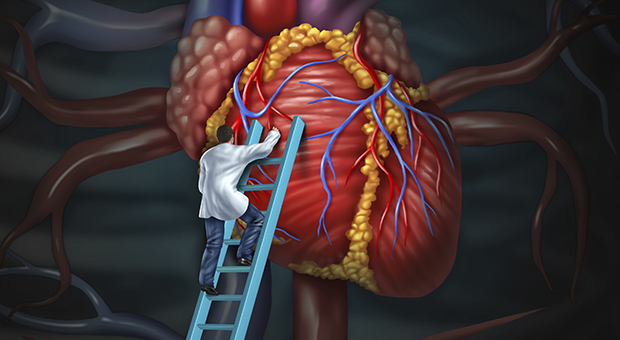The Medical Minute: Doctors and patients are partners in heart health

Medical management and surgical options for people with heart disease improve each year. But coronary disease remains the leading cause of death in the United States. And patients still can do more than doctors when it comes to preventing and managing their risk.
“Despite all the medical advancements and therapies, there is no magic cure – people's lifestyles have to change,” said Dr. Eric Chan, a cardiologist at Penn State Hershey Heart and Vascular Institute.
Heart disease can affect people at any age, and tends to fall into two categories – electrical problems and plumbing problems.
A heart rhythm disturbance called atrial fibrillation – when the top chambers of the heart shake rather than contract – can cause shortness of breath and palpitations, increasing a person's risk of developing blood clots and a stroke. The five most common risk factors for the condition are a history of heart failure, high blood pressure, diabetes, previous strokes and being 75 or older.
In the past, patients who had several risk factors were given the drug Coumadin, but would need to follow a strict diet and have the thickness of their blood monitored with a finger prick each month. New medications allow patients to orally receive blood thinners without the need for monthly pricks.
“It has been a big advancement that has proven very helpful for managing these patients,” Chan said.
The most common plumbing problems include coronary disease and valve disorders.
Most people are familiar with the symptoms of coronary artery disease – chest pain, shortness of breath, and pain in the jaw that radiates to the arms. A stress test and cardiac catheterization help diagnose if and where blockages are present and whether a patient would benefit from a stent to open the artery or bypass surgery.
Although medicines are available to help lower the heart rate or blood pressure, lifestyle modifications such as quitting smoking, improving diet and exercise are the best ways to improve the condition, Chan said.
Aortic and mitral valves that don't work correctly allow blood to flow back into parts of the heart or make the heart work harder to push blood through its chambers. Symptoms of these most common valve diseases include lightheadedness, dizziness and passing out.
“It can lead to heart failure if left untreated,” said Dr. Harsh Jain, a cardiothoracic surgeon at Penn State Hershey Heart and Vascular Institute.
Men, diabetics, smokers, alcoholics, people who have had rheumatic fever as a child and those with high cholesterol or a family history of heart valve disease are more at risk than the rest of the population, he said.
Risk factors for valve-related heart disease include older age, rheumatic fever, heart attack and a history of endocarditis (infection on the heart valve).
Advances in treatment include new stents that keep arteries open longer and the development of minimally-invasive procedures that allow doctors to complete surgeries by entering through the ribs and without fully opening the breastbone.
Chan said, “I think the biggest key is that yes, we have medications and procedures to help with these problems, but you have to change, as well.”
Click here to learn about ways in which Penn State Hershey is observing American Heart Month throughout February.
The Medical Minute is a weekly health news feature brought to you by Penn State Milton S. Hershey Medical Center. Articles feature the expertise of Penn State Hershey faculty physicians and staff, and are designed to offer timely, relevant health information of interest to a broad audience.
If you're having trouble accessing this content, or would like it in another format, please email Penn State Health Marketing & Communications.
